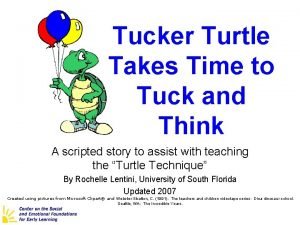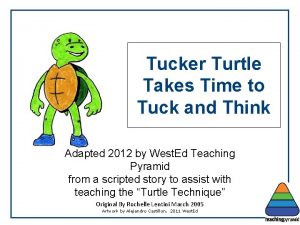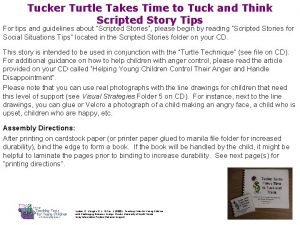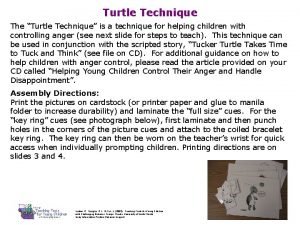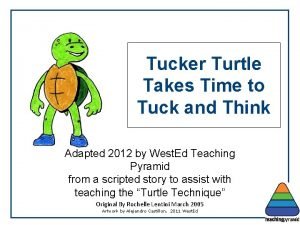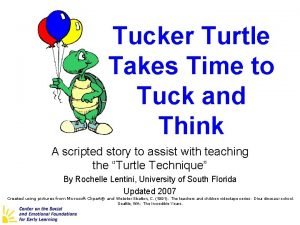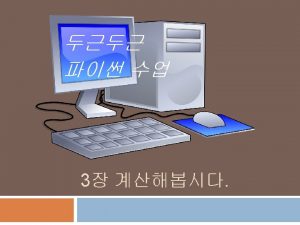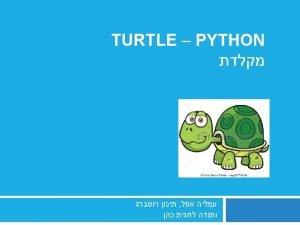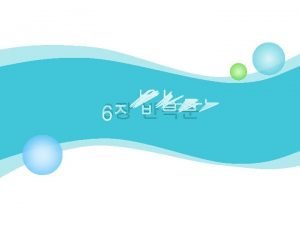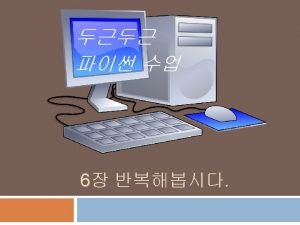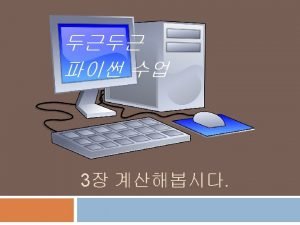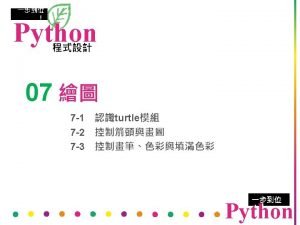Turtle Technique The Turtle Technique is a technique









- Slides: 9

Turtle Technique The “Turtle Technique” is a technique for helping children with controlling anger (see next slide for steps to teach). This technique can be used in conjunction with the scripted story, “Tucker Turtle Takes Time to Tuck and Think” (see file on CD). For additional guidance on how to help children with anger control, please read the article provided on your CD called “Helping Young Children Control Their Anger and Handle Disappointment”. Assembly Directions: Print the pictures on cardstock (or printer paper and glue to manila folder to increase durability) and laminate the “full size” cues. For the “key ring” cues (see photograph below), first laminate and then punch holes in the corners of the picture cues and attach to the coiled bracelet key ring. The key ring can then be worn on the teacher’s wrist for quick access when individually prompting children. Printing directions are on slides 3 and 4. Lentini, R. , Vaughn, B. J. , & Fox, L. (2005). Teaching Tools for Young Children with Challenging Behavior. Tampa, Florida: University of South Florida, Early Intervention Positive Behavior Support.

Turtle Technique • Model remaining calm • Teach the child the steps of how to control feelings and calm down – Step 1: Recognize your feeling(s) – Step 2: Think “stop” – Step 3: Go inside your “shell” and take 3 deep breaths – Step 4: Come out when calm and think of a “solution” • Practice steps frequently • Prepare for and help the child handle possible disappointment or change • Recognize and comment when the child stays calm • Involve families: teach the “Turtle Technique” Webster-Stratton, C. (1991). The teachers and children videotape series: Dina dinosaur school. Seattle, WA: The Incredible Years.

PRINT DIRECTIONS FOR FULL SIZE CUES Step 1: Click on File & select Print Step 2: Select slides to print cues Type 5 -9 Step 4: Type # of copies Step 3: Select “slides” Step 5: Click OK Lentini, R. , Vaughn, B. J. , & Fox, L. (2005). Teaching Tools for Young Children with Challenging Behavior. Tampa, Florida: University of South Florida, Early Intervention Positive Behavior Support.

PRINT DIRECTIONS FOR KEY RING CUE Step 1: Click on File & select Print Step 2: Select slides to print rules Type 4 -9 Step 5: Type # of copies Step 4: Select 6 slides per page Step 3: Select “handouts” Step 6: Click OK Lentini, R. , Vaughn, B. J. , & Fox, L. (2005). Teaching Tools for Young Children with Challenging Behavior. Tampa, Florida: University of South Florida, Early Intervention Positive Behavior Support.

Step 1

Step 2

Step 3

Step 4

Help the Child Think of a Possible Solution: • Get a teacher • Ask nicely • Ignore • Play • Say, “Please stop. ” • Say, “Please. ” • Share • Trade toys/item • Wait and take turns • Etc. Lentini, R. , Vaughn, B. J. , & Fox, L. (2005). Teaching Tools for Young Children with Challenging Behavior. Tampa, Florida: University of South Florida, Early Intervention Positive Behavior Support.
